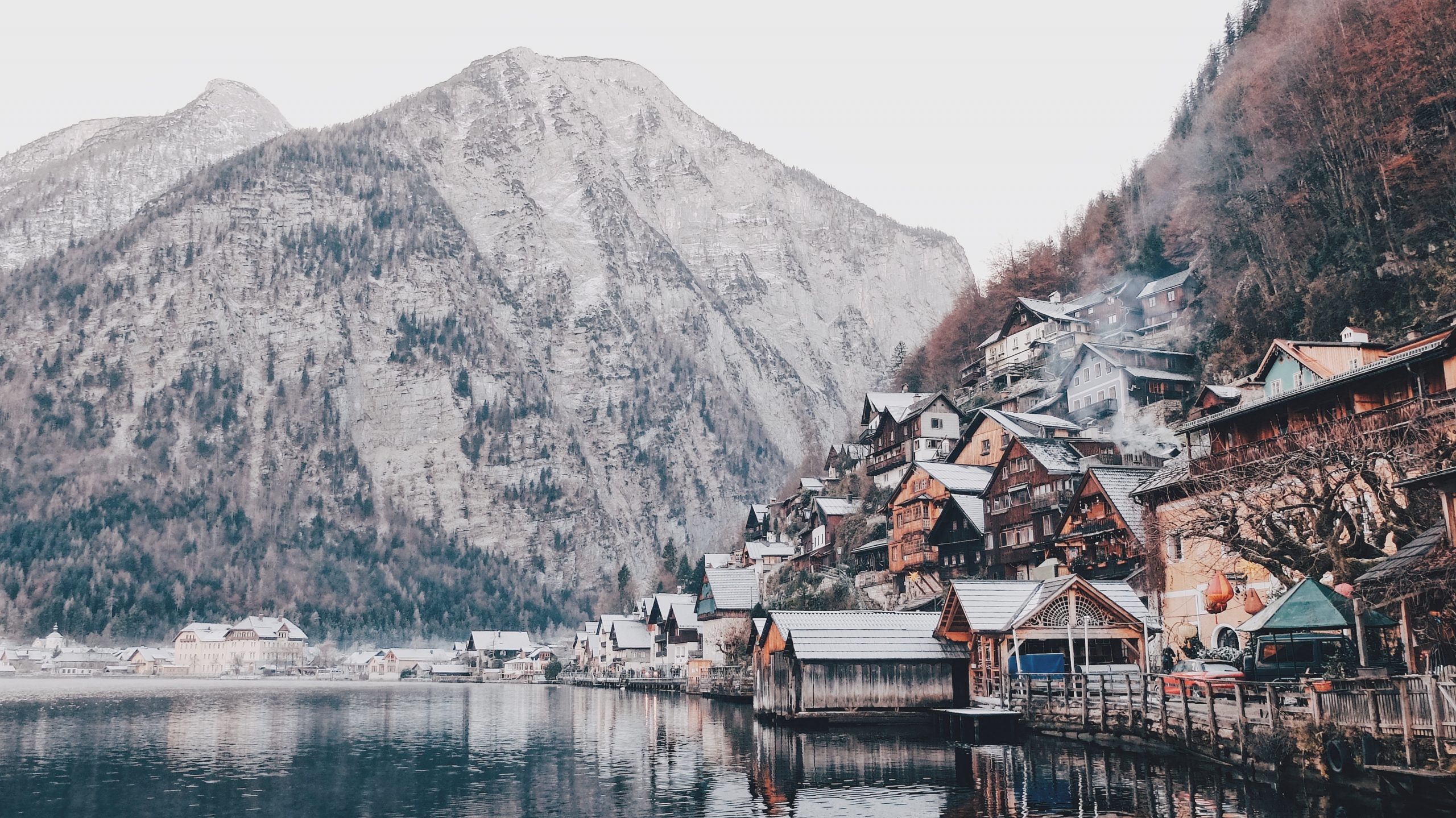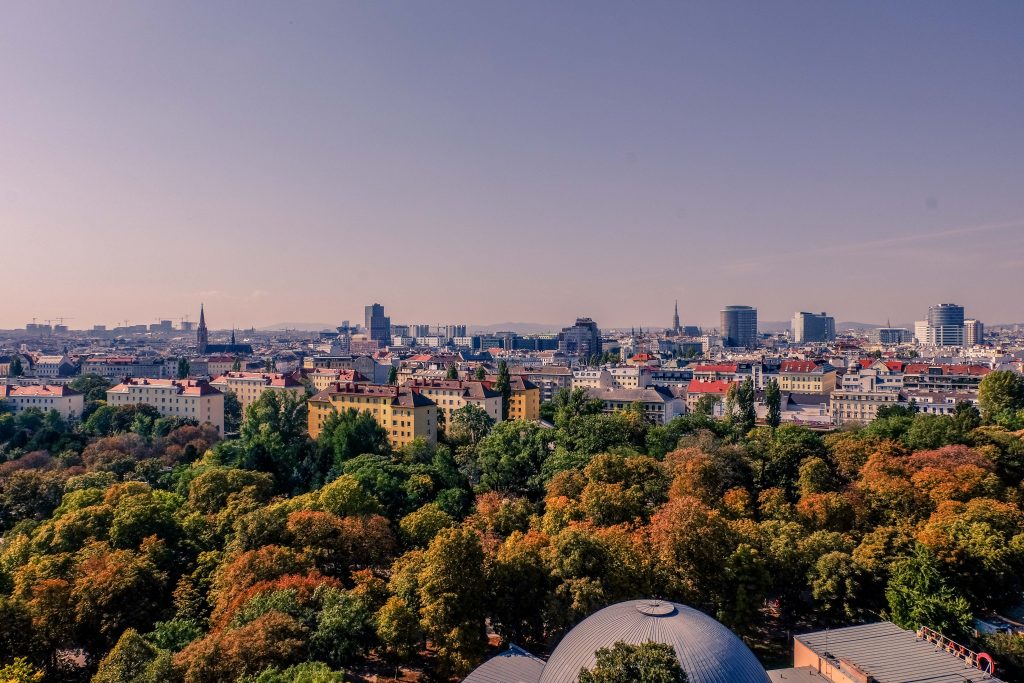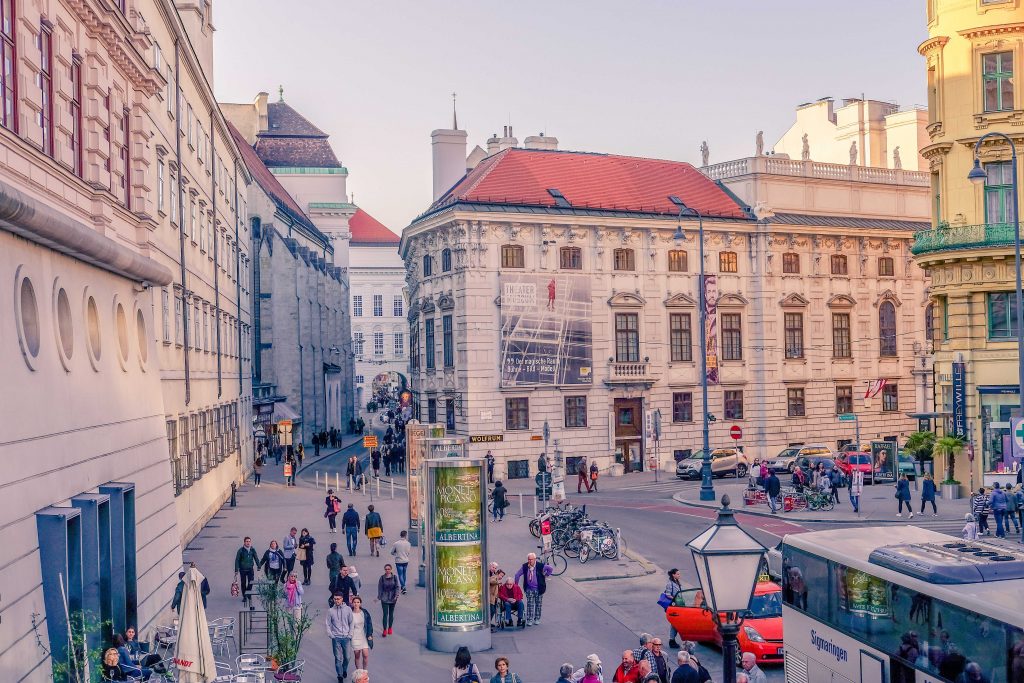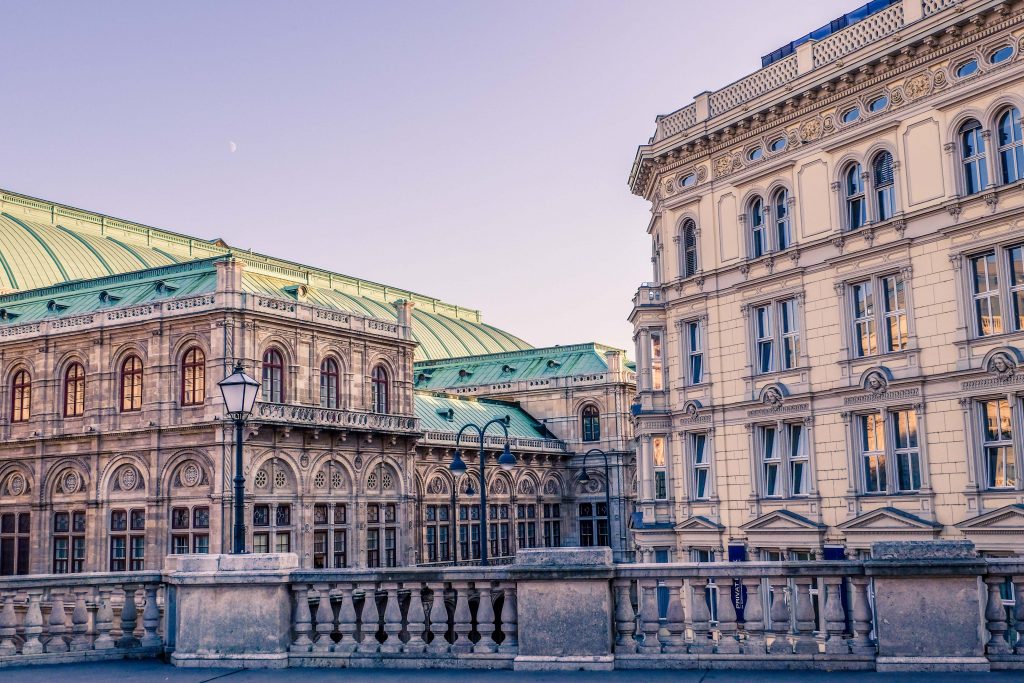Austria is a picturesque country in Central Europe, celebrated for its stunning Alpine scenery, rich cultural heritage, including classical music and art, and historic cities like Vienna and Salzburg, offering a blend of natural beauty and sophisticated urban experiences.
Landscape
The journey is what matters in Austria. With such an attractive landscape, you won’t be able to stop meandering through Austria’s tall mountains and thick forests. The Austrian landscape is also characterized by the Danube River that passes through the Northeastern side towards the Alps and the hills. Austria is home to incredible lakes that show evidence of nature’s creativity through glacial erosions, like the Neusieder Lake and Lake Constance. Austria is graced with natural landscapes worth paying a visit.
Gastronomy
A deep dive into Austria’s cuisine reveals a different side that you are bound to like. Waking up, you will be greeted by a substantial breakfast consisting of bread rolls with cheese, jam or cold meat which you can take with coffee or tea. During the day, you will unlock all your taste buds with the scrumptious taste of the Tafelspitz (boiled beef with apple and chives source), Liptauer that is spicy cheese on bread or Rindsuppe that is beef soup.
Coffee Lover? Then you must visit Vienna, home to the Viennese coffee house which is seen as an institution. Since October 2011, the Viennese Coffee House Culture was listed as an Intangible Cultural Heritage. Austria has introduced many types of coffee in Europe, which explains why the country is credited highly for its numerous styles of serving coffee. An example of this is the Austrian Mokka or Kleiner.
Culture
Just like rich cuisine, the culture, and the traditions of the Austrians are also iconic. The influence of the Austrian culture is hugely reliant on the surrounding countries. When you look at art, the Austrian culture has adopted folk music known as Schrammelmusik, played with an accordion and a double-necked guitar. There is a throat singing technique developed in the Alps, yodelling known as Juchazn that you will most certainly want to see during your visit. The common sports for the Austrians are football, skiing and ice hockey.
Nature
Woods and forests cover most of Austria. In fact, Austria is one of the most densely forested countries in Europe, with two-fifths of the land covered by forests. Conservation laws protect nature, and within it, animals coexist peacefully. The wild animals you could see in Austria include falcons, owls, cranes, eagles, swans, storks, buzzards and lastly the brown bear.
Austria is naturally unique with incentive sceneries you will love. Don’t forget to include this wonderful country on your tour around Europe.
Best Time To Visit
Overall, the best time to visit Austria is either side of peak season (June to August). The crowds are much fewer in the shoulder seasons in Spring (April to May) and Autumn (September to October). When the weather is mild and prime for outdoor activities.
The two tourist seasons surround summer hiking and winter sports. Austria boasts incredible beaches and mesmerizing mirror lakes to enjoy in summer. Between April and October. With the world-class snow season getting pumped around November and clear into April. Heading to the mountains is worth it in many ways. Snow lovers, as well as the more rest inclined tourists, will enjoy sinking into the soothing, steamy spa pools in this winter wonderland.
Sunday is a day of rest. Austrian’s take their right to a restful Sunday seriously, so most businesses close. A perfect opportunity to get out into the wilderness and discover true Austrian beauty.
What To Expect
When planning a trip to Austria, don’t forget the tiny details that will get you off to a great start on your trip.
Currency – The official currency of Austria is the Euro
Language – The official language is Austrian German. Most Austrian’s speak a good level of English from school education.
ATMs – ATM’s are abundant in Austria and most accept foreign cards. A top tip is to avoid ‘Euronet’ ATM’s as they charge much higher fees. Taxes are always included in the sale price.
Plugs & Sockets – Austria uses two plug types. Type C with two round pins and type F with earth clips on the side. Austria has a 230V supply voltage and 50Hz.
Safety – Austria is safe to visit and has one of the lowest crime rates in the world.
Climate – Austria has a temperate climate, enjoying warm summers and mild winters inland. The mountain ranges boast a healthy dose of snowy conditions for winter activities.



